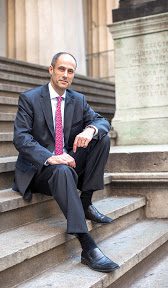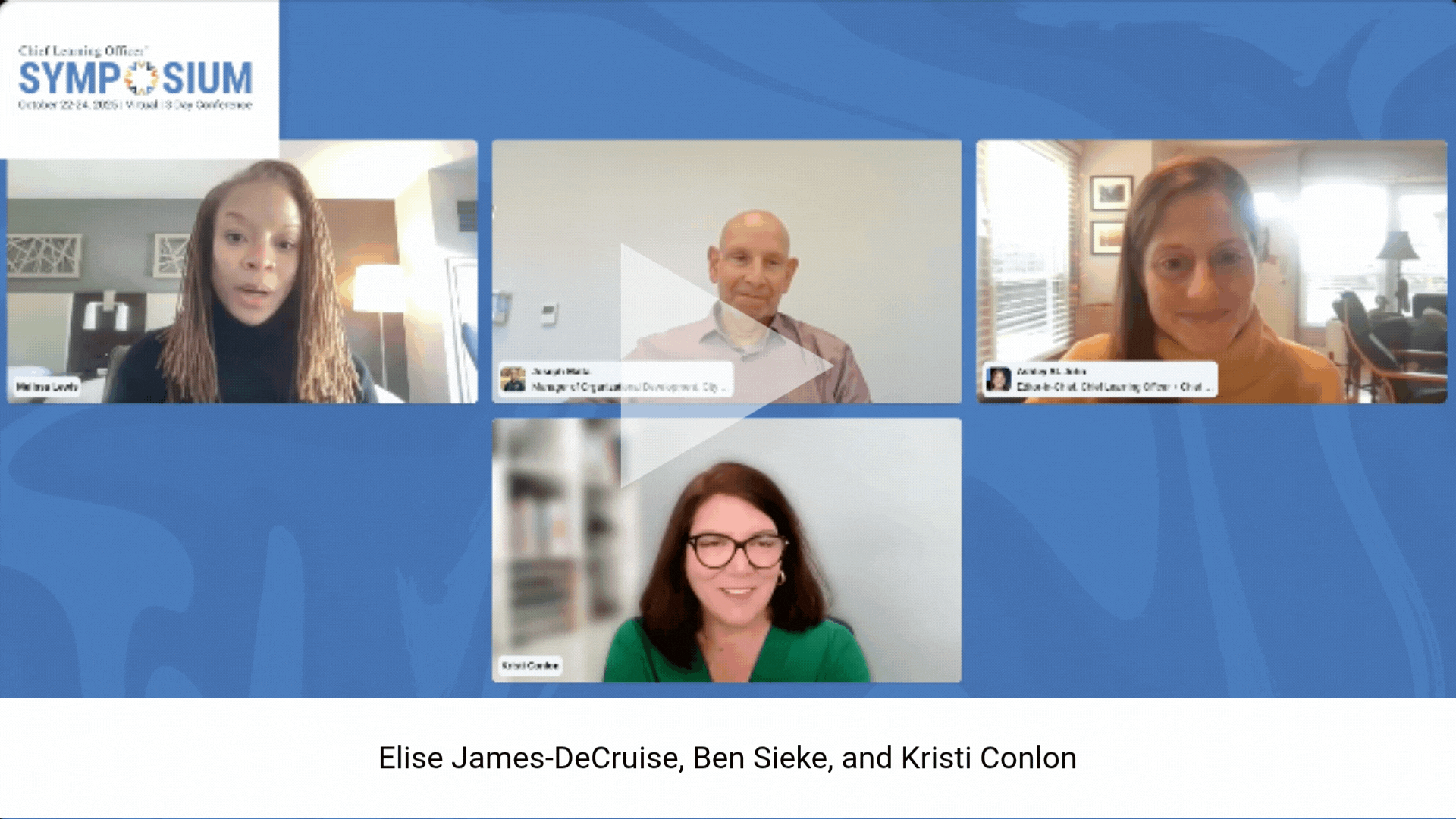When it came time for college, like many high school graduates David J. DeFilippo didn’t know what he wanted to do.
He’d spent much of his life in classrooms, and as he considered a career path, he reflected on the influence educators and coaches had on his life. He decided to major in Spanish at Union College in Schenectady, N.Y., and subsequently became a high school Spanish teacher and track coach.
Now at global financial services organization BNY Mellon, he’s taking on a different type of learning — not one necessarily bound by a traditional classroom’s four walls, but one that is heavily dependent on the fast moves that defined his time as a coach. As the organization’s new chief learning officer, DeFilippo can help shepherd the organization toward a learning strategy that will enhance performance and turn development into a driver for business growth.
Formerly CLO for BNY’s asset management business, DeFilippo was promoted to chief learning officer for the entire organization in June after the executive committee decided to consolidate learning and development activities — and all learning professionals — into a central university structure.
DeFilippo held his former role for five and a half years. With the promotion his responsibility increased from roughly 4,000 global employees working in about 15 different investment management firms in asset management to 50,000 globally.
“Each of our lines of business run semi-autonomously,” he said. “Every business had its own smallish learning and development staff and solutions. We took a look at what that means from the standpoint of staff who were not really collaborating, the cost and the user experience for the employees.”
When the bank was recruiting for the position BNY Mellon President Karen Peetz said DeFilippo was viewed as the lead internal candidate, but “we had convinced ourselves that we should also look externally. I had begun to talk to David in the interviews. That, you know, we’re looking on the outside, perhaps you’d want to take the leadership development position if you don’t get the job. He said no. He didn’t even want to think about that. He wanted the top job.”
The bank undertook a formal analysis from September 2012 to March of this year before deciding to adopt a centralized university model. This model will not result in a brick-and-mortar university; it will be a virtual, multi-site university under one brand. But it will remain flexible so that a learning staff of more than 200 can easily build a community.
“Certain capabilities will sit in academies, like leadership development, management development, risk and compliance, things that should be consistent across the organization.
There will be some regional and line of business nuances, but we’re going to keep that at an 80-20 as opposed to a 20-80 type of differentiation. We’re going to acknowledge our diversity and be more effective and more efficient,” DeFilippo said.
Making Things Better
All of the changes underway in the learning organization are intended to improve business performance. DeFilippo said he began to appreciate the connection between learning and performance 25 years ago as a track coach and high school teacher.
“I learned the importance of being a role model and of leadership skills like giving feedback, for example — the importance of objective, behavioral-based feedback … at a relatively young age,” he said. “That four years I spent as a teacher was very instructive as far as the way I think about myself as a leader.”
DeFilippo left teaching to work for global package delivery company UPS in its management training program. There he wore the brown uniform and drove a truck delivering packages before graduating to a series of rotations in operations and sales. This led to a career-defining moment in 1994. His boss, who knew of his past life as an educator, recruited him for a training project team. For the next two years he traveled the country leading training in company call centers.
“I came away from that experience having realized that’s where I wanted to spend my career,” he said. “I left UPS and went to work in what’s now Comcast, progressed in a variety of learning and development roles there and ended up working at Capital One, which was the beginning of my experience in the financial services industry. I left there and went to Bank of America before I came here.”
In his new role DeFilippo said the challenge is twofold. No. 1, there is a lot to do to build a new centralized university infrastructure at a rate that works for employees from the executive committee down to the front line. In his first six weeks on the job he said he was less a chief learning officer and more of a chief communications officer, talking about BK University, the company’s corporate university, to stakeholders at all levels of the organization.
BK University’s first program was called Manager Month, which DeFilippo said was intended to set the tone for the cultural and performance change afoot. The company’s manager standards were introduced during Manager Month, identifying four dimensions the organization expects managers to be accountable for managing: people, self, performance and risk.
“We’ve defined the behaviors that we expect in those areas, we’ve provided learning resources and tools for managers to use, and that’s the beginning point of our management development strategy,” he said.
His leadership team will consist of 10 senior leaders, nine of whom will focus on curriculum for different academies within BK University. The 10th is Deborah Lorenzen, a chief operating officer specific to the learning organization who will help to run everything behind the scenes. Her sole focus is to optimize, consolidate and standardize. “The thing I’m excited about is we hired a business person. That gives us credibility, but also we’re opening ourselves up to learn by bringing someone into the team who isn’t a classically trained learning person,” DeFilippo said.
Counting on Performance
Metrics are also being developed as BK University comes together. DeFilippo said the company has historically not done a good job with measurement, though it is important, and the new infrastructure will support data gathering and use. It has to. The learning organization is now one group, and “it’s almost like creating a target because the total cost of that group is more visible.”
For instance, there were 9,000 courses across the company, and that has since been reduced to 6,000. Metrics will enable the learning team to determine if those courses are necessary and whether employees are actually using available resources.
“As we launch programs that are either new, revised or meet a critical business need, we’re planning to develop the measurement capability so that we can leverage different levels of evaluation as appropriate,” DeFilippo said. “I’m not going to say that we’re going to measure ROI on every single program, but we do need to answer a very important question, which is, is what we’re doing effective in the context of meeting a business need?”
BNY Mellon has more than $26 trillion in assets under administration or custody as of March. So, while the bank’s learning strategy may prioritize the user’s learning experience and building in measurement support, its more holistic strategy details how it will use learning to increase performance.
“That $26 trillion in assets under custody, I don’t want the magnitude of that number to escape you,” DeFilippo said. “It’s a quarter of the money, dollars, that move around the world every day. We’re a SIFI, one of the banks that couldn’t be allowed to fail.”
A SIFI, or systematically important financial institution, is an essential a part of the overall financial system, thus its failure would endanger the economy. BNY will ensure its continued success with a deliberate focus on organic growth, specifically growth through its base and maximizing its clients, not through acquisition.
“That means the people who meet with our clients, the people who support the people who meet with our clients, require education about our products, services, systems, other lines of business they may not be directly involved in, all to better work with and ultimately to service those clients,” DeFilippo said.
BK University is being implemented in three phases. This year DeFilippo said he’s getting everything and everyone under one roof. Next year the bank will optimize its infrastructure, programs and people, part of which means understanding what the business requirements are in connection to all of those things. Phase three is long term and depicts a vision of BK University as one of the best developers of talent on the street.
DeFilippo said the team will know it has succeeded when recruiters interview prospective employees and realize the organization’s reputation for development is an attraction tool. “Additional evidence of success will be that our clients will want to learn from us,” he said. “… We can offer them education and have client forums and things that create better relationships and challenge us to stay best-in-class.”
Running the Race
To a track coach, almost everyone has potential. That goes for former track coaches too. DeFilippo said all employees come to work each day wanting to do their jobs, to do them well and to be enriched in their careers. But getting them to that place takes work. Not everyone is the same. People have different roles, personalities and motivators. It’s up to the learning leader to find those motivators.
“When I think about teams that I’ve coached, every time it came down to, ‘How do I help the individual on the team in a differentiated way to be the best they can be at what they do?’ It’s all about helping people realize their potential.”
DeFilippo said the learning organization can personalize things for managers so that they embrace having conversations with people about their current work, what they may want to do in the future and how BK University can help them get there. “It’s about not overcomplicating things, which is why I reflect on what it was like to be a coach,” he said. “Coaching is all about performance. I am the coach of the team. My job is to help optimize the team in service of optimizing the organization.”
A company is only as good as its staff, Peetz said. Good employees lead to business results, client satisfaction and ultimately happy shareholders. “Focusing on the quality of the people who work for you and their engagement, their happiness, their desire to stay with you and do well for the company is huge,” she said. “At the end of the day you can have this overall construct of people in all different functions across the company understanding they’re responsible for their own career, but the company is providing this infrastructure for their development along the way.”
DeFilippo, Peetz said, has a wealth of experience in learning and the requisite background. “Of course, you can have all that and not be as effective as Dave is turning out to be.”
BNY spends some $30 million on learning and development, and Peetz said DeFilippo is responsible “for all those folks around the world and that budget across all businesses across the company. But he’s also responsible — since we’re just kind of kicking this off — to establish the structure for the university, to staff it appropriately with internal and external resources, and to shape the curriculum for each of the academies within the university.
“He is the leader, he is the driver, he is the fellow who has done a terrific job of getting himself known not only atop the executive committee, but for all of the different business people and business partners.”
DeFilippo interviewed with each member of the executive committee who made up a task force to recruit the CLO position, and Peetz said he came across the same way to all of them, “incredibly single-minded.
“This was his dream job,” she said. “We had two very promising external candidates, but it was his passion that won the day, and everyone could not be happier. His candidacy is supported across the company. That’s a great way to go into a new job, when you know you have the senior-most people behind you. But he won that respect, and he won the position.”

















